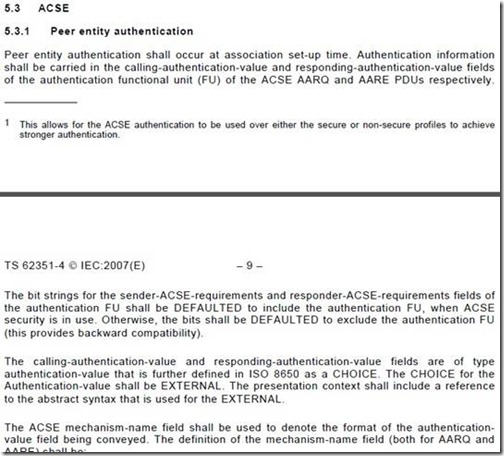IEC 61850 defines several aspects on how devices interoperate and how the interoperation is engineered and guaranteed to run in multiple vendor projects. Earlier this year we have seen a public statement by ENTSO-E on the use of IEC 61850 compliant devices and tools.
Another huge organization has added to the ENTSO-E statement: The Very Large Power Grid Operators (VLPGO). The “association of the 16 largest Power Grid Operators serving more than 70% of the electricity demand in the world and providing electricity to 3 billion consumers”.
I guess this is true – then I would expect that these 16 power grid operators could easily “control” what vendors have to deliver – deliver IEC 61850 compliant solutions that meet the needs of these companies!! And they could have an appropriate influence on the standardization work.
Download the VLPGO statement on IEC 61850.
Instead of purchasing what they really want and need, they complain about the standardization groups: that the standardization organizations “should from the PGO perspective be more directive within the standard.
They should not allow different suppliers
to implement standards differently.
In particular, a strong standardization degree at the interfaces between tools (vendor specific or third-party) is required. Moreover, stability, or at least backward compatibility of the standard should be guaranteed. … Consequently, we would like to strongly suggest to all IEC61850 stakeholders to take the appropriate actions in order to ensure the success of IEC61850 and to make sure the standard – and the technologies developed around it – remain sustainable and provide significant benefits for all stakeholders and the community.”
I am wondering that (obviously) the few utilities that deliver 70% of the electric demand have an interesting view on what the IEC TC 57 (and other groups) could manage and gain.
IEC COULD NOT control what and how vendors implement
and what users use!!
This could (more or less) easily be controlled by the user communities: by just purchasing products that meet the users’ requirements only. Why did the many utilities purchase automation systems that did – to some degree – not meet their requirements? Were they not precisely specified or did they not understand how to write the specifications? Or? My experience is that in many cases the technical people of utilities had not been involved in purchasing IEC 61850 based systems! Several utilities hired me for a training of their engineers AFTER they the vendors commissioned the systems. Engineers told me that they were responsible for the service and maintenance of the systems – having NO CLUE what IEC 61850 is!!
Engineers of a well known group of large utilities in Europe told me some two years ago that they were not allowed to conduct lab tests or build pilot projects … in one case a utility expert told me that they had to stop their special group of experts on IEC 61850 to get prepared for the new technology – instead their management believed that the vendors do all things right.
There is a saying: “Pay now or pay later”. From the perspective of the years 2000-2002 utilities refused to “pay” for the standardization and for “controlling” the implementation into products. They have decided to “pay” later: 2012, 2013, … I look forward to see them paying.
Back to the standardization: IEC standardization work is a democratic process and: the work is done by people attending the meetings and contributing to the technical work. If the user communities would have been shown up more often and contributed to the technical to a higher degree, then we would not see these statements flying around today. The users (especially the 16 BIG ONES in the VLPGO) should GET INVOLVED (by letting their experts getting more deeply involved or by providing resources for people that are already involved …) instead of “strongly suggest to all IEC61850 stakeholders to take the appropriate actions in order to ensure the success of IEC61850 and to make sure …”.
I would have expected a statement like this: “VLPGO member companies offer increased and appropriate resources (many more experts getting involved and funding Millions of Dollar or Euro for common activities) in order to ensure the success of IEC61850 and to make sure …”. The VLPGO member companies – somehow – have to provide more resources than it was the case in the last 10 years or so.
It is time to educate more people from the many stakeholders to understand how IEC standards are defined and what it means to have a standard published. The standardization groups can lead the horse to the water – but they cannot make the horse drink the water!
Vendors, users, system integrators, and consultants should work more closely together to make sure that everybody gets a benefit from the standard. One possibility to support this goal could be to set-up a European Users Group for IEC 61850! This group could be a subsidiary of the UCAIUG – it would be easier (especially for utility experts) to travel within Europe than across the Atlantic. By the way, the UCAIUG is – from my point of view – more a Vendors Group!
Finally: The vendors have spent a lot of time and money in defining the standards and to implement them!!! Thanks a lot for their engagement! Keep going!







